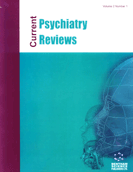Abstract
Background: Delirium is a complex multifactorial neuropsychiatric disease, associated with negative outcomes: increased length of hospital stay, functional and cognitive decline, institutionalization and mortality. It is often poorly recognized due to its fluctuating nature, its overlap with dementia and the lack of valid and specific rating scales in clinical routine. Aim: This study review describes the characteristics and psychometric properties of delirium scales available in research and clinical practice. Methods: The MEDLINE database was used to identify the delirium scales (1990-2010), using keywords: delirium, confusion, severity, questionnaires, scales and screening. Only primary and validation studies were included. The exclusion criteria were children and alcohol or drug delirium assessment scales. Results: This study included seven screening scales (CAM, ICDSC, DSI, NEECHAM, CTD, DOSS, Nu-DESC) and six severity scales (DRS-98-R, MDAS, CSE, DSS, DI, DOM). The psychometric properties of each scale were reported. The majority of scales were based on the Diagnostic and Statistical Manual of Mental Disorders – DSM-IV criteria as well as on a review of selected symptoms of delirium informed by systematic clinical observation and formal brief assessment of mental status. Conclusions: The selection of instrument may be dependent on administration time and rater training requirements. However, bearing in mind the recent reviews included, the CAM is considered the most widely used instrument for delirium diagnosis and the DRS-98-R to measure the severity of delirium states. In overall studies these instruments revealed good psychometric properties: sensitivity/specificity (CAM 100-94%/95-90%; DRS-98-R 92%/93%) and interobserver reliability (CAM k=0.81-1; DRS-98-R ICC=0.98-0.99).
Keywords: Delirium, Elderly, Older assessment, Scales, Screening, Severity, Cavum septi pellucidi, Cavum vergae, Mood Disorders, Neuroactive Steroids, neuroactive steroids (NASs), DHEAS, ketoconazole, hippocampus, antidepressants, Postmortem study
 33
33

